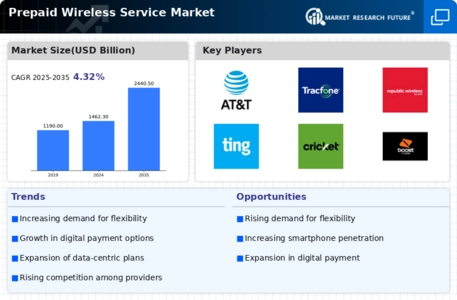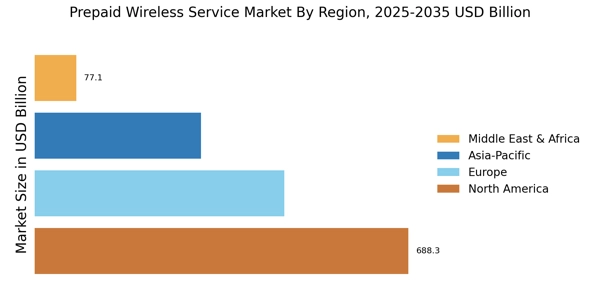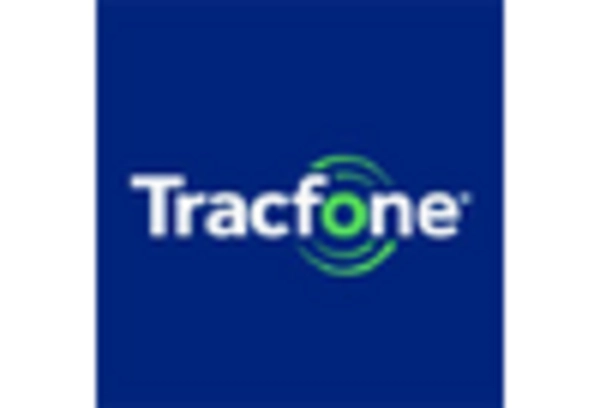Rising Adoption of Mobile Devices
The increasing penetration of mobile devices is a primary driver for the Prepaid Wireless Service Market. As more individuals acquire smartphones and tablets, the demand for prepaid services rises. In 2025, it is estimated that over 80% of the population in many regions will own a mobile device, leading to a surge in prepaid subscriptions. This trend is particularly pronounced among younger demographics who prefer the flexibility and cost-effectiveness of prepaid plans. The convenience of mobile devices facilitates access to various services, further propelling the growth of the prepaid wireless sector. Consequently, service providers are compelled to innovate and enhance their offerings to capture this expanding customer base.
Cost-Effectiveness of Prepaid Plans
Cost considerations play a pivotal role in the Prepaid Wireless Service Market. Prepaid plans typically offer lower monthly fees compared to traditional postpaid contracts, making them attractive to budget-conscious consumers. In recent years, the average monthly cost of prepaid services has decreased, with many plans now available for under 30 dollars. This affordability appeals to a wide range of customers, including students, low-income families, and those seeking to avoid long-term contracts. As economic conditions fluctuate, the demand for cost-effective solutions is likely to persist, driving further growth in the prepaid segment. The competitive landscape among service providers also contributes to the ongoing reduction in prices, enhancing the appeal of prepaid options.
Increased Focus on Consumer Control
The Prepaid Wireless Service Market is witnessing a shift towards greater consumer control over mobile expenses. Prepaid plans empower users to manage their spending by allowing them to pay in advance for services. This model eliminates the risk of unexpected charges, which is a common concern among postpaid users. As consumers become more financially savvy, the desire for transparency and control over mobile expenses is likely to drive the adoption of prepaid services. Additionally, the rise of digital payment methods facilitates seamless transactions, further enhancing the appeal of prepaid options. This trend indicates a broader movement towards consumer-centric business models in the telecommunications sector.
Expansion of Retail Distribution Channels
The expansion of retail distribution channels significantly influences the Prepaid Wireless Service Market. Retailers are increasingly offering prepaid wireless services, making them more accessible to consumers. In 2025, it is projected that the number of retail outlets providing prepaid options will increase by 25%, enhancing visibility and availability. This trend is particularly beneficial for consumers in underserved areas, where traditional service providers may have limited reach. The convenience of purchasing prepaid plans at various retail locations, including convenience stores and supermarkets, encourages impulse buying and attracts new customers. As distribution channels continue to diversify, the prepaid market is likely to experience sustained growth.
Technological Innovations in Service Delivery
Technological advancements are reshaping the Prepaid Wireless Service Market, enabling providers to enhance service delivery. Innovations such as mobile apps for account management and real-time data tracking are becoming standard features in prepaid offerings. These technologies not only improve user experience but also foster customer loyalty. In 2025, it is anticipated that over 60% of prepaid users will utilize mobile applications to manage their services. Furthermore, advancements in network infrastructure, including the rollout of 5G technology, are expected to enhance the performance of prepaid services, attracting tech-savvy consumers. As technology continues to evolve, it is likely to play a crucial role in driving the growth of the prepaid wireless sector.


















Leave a Comment